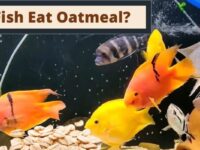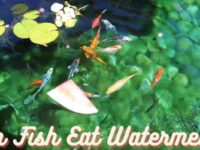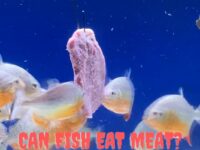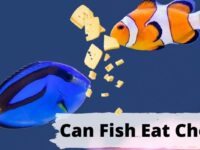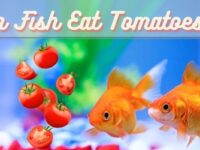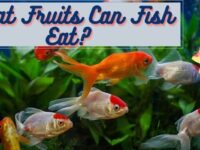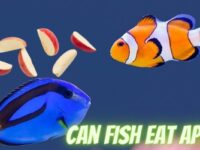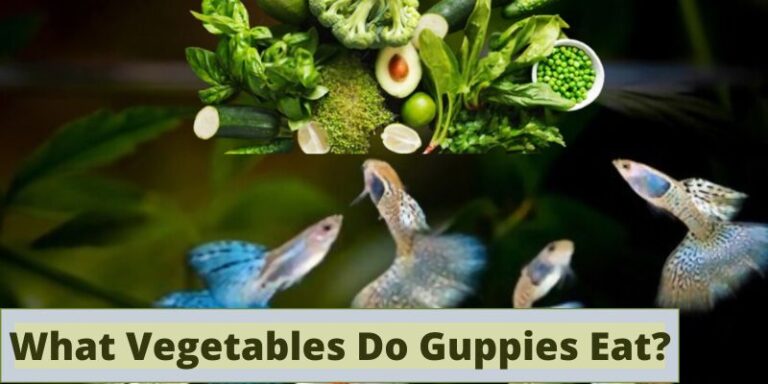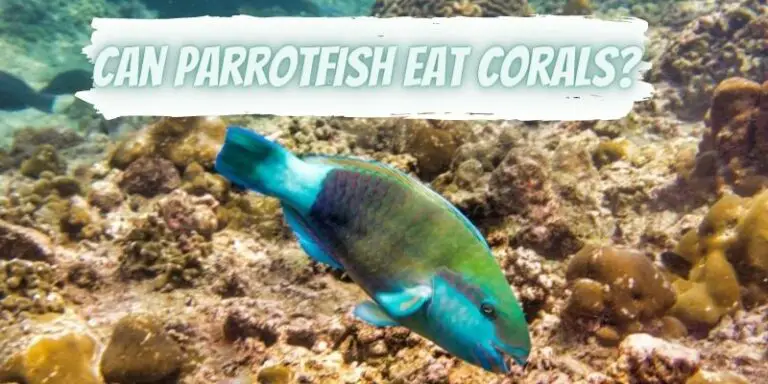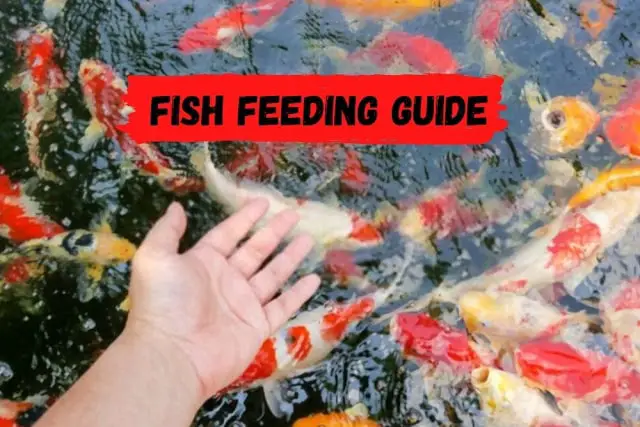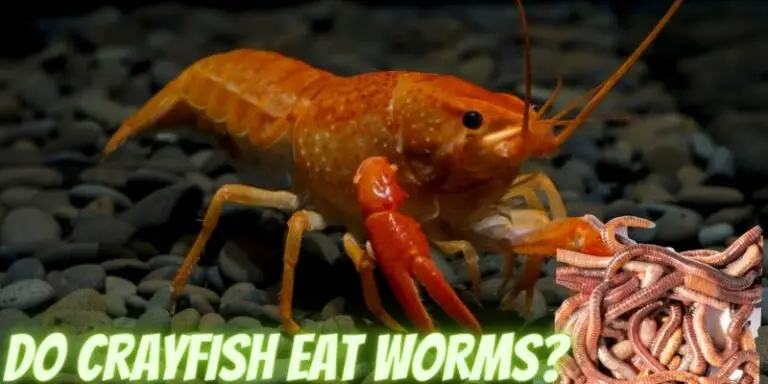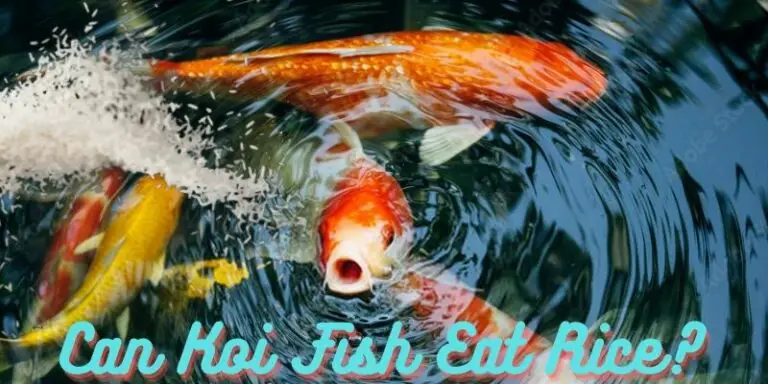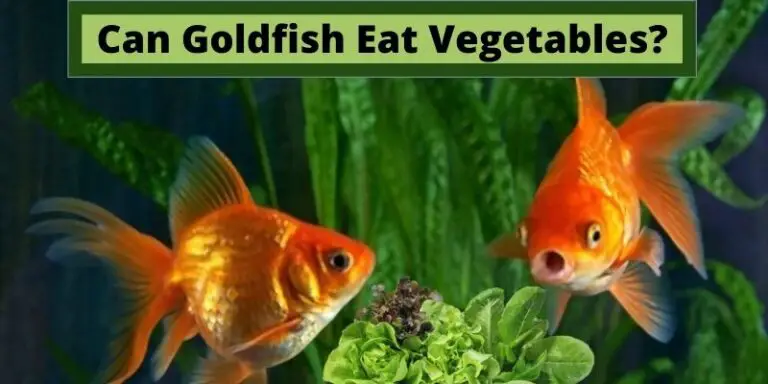What Vegetables Can Fish Eat? (Favorite Veggies)
The fish diet consists of various foods, including pellets, insects, shrimps, flakes, fish foods, fruits, veggies, and many more foods. But the vegetables that fish eat are not clear to many fishkeepers who want to feed their pet fish veggies, so what vegetables can fish eat?
Fish can eat peas, spinach, cucumber, lettuce, corn, carrot, and potato. These foods are one of their favorite vegetables that fish like to eat. Also, these veggies are beneficial for their health when it comes to nutrition.
Are Vegetables Safe For Fish?
Yes, vegetables are one of the best meals for fish to eat. There is no need to worry about feeding them vegetables, but some precautions are necessary.
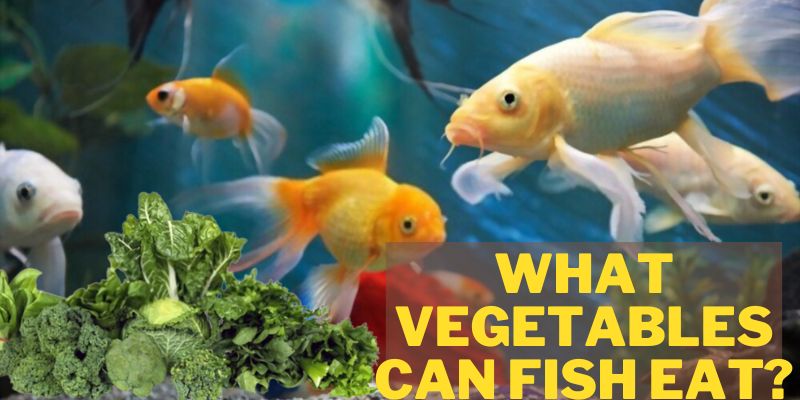
Depending on their digestive tract, many fish prefer vegetables as their primary source of nutrition. Most vegetables are beneficial to fish due to antibacterial, anti-fungal, anti-inflammatory, and anti-parasite behavioral traits.
Vegetables are also helpful in the improvement of immune systems, organ function, reproduction, and growth.
These are important for their nutritional value and for minimizing constipation in fish by their high fiber amount.
You can serve them cooked or boiled peas, squash, cucumber, and small amounts of sliced lettuce to balance their diet.
Can I Feed My Fish Vegetables?
Yes, you can feed vegetables to your fish without any worry. Fish require enough supply of energy to keep their metabolism in their bodies.
Properly feeding them vegetables is essential for their proper growth and development. Fish diets range from species to species, so you must be familiar with what types of foods your fish need and how much food they require.
Broccoli, peas, squash, and various types of lettuce are some of the most popular vegetables for feeding fish. Boil or cook non-leafy vegetables to ensure the food is easier for the fish to eat.
Remove the peel from veggies, such as peas and cucumbers, as this part of the vegetable may be difficult for fish to consume.
Aside from those options, serve them various vegetables until you find ones that your fish enjoy.
Do Fish Like Vegetables?
Fish like eating vegetables not only because of their delicious taste but also because they get variety by having vegetables in their diet.
The best approach is to try a variety of vegetables. Serving one vegetable at a time and several times a week is recommended.
At the same time, you should check what they eat and what not, choose one vegetable for the entire month and serve it.
Then, the next month, try something different. By this, fish will get a chance to choose the diet according to their meal likes and dislikes what you put in the tank. Before feeding them, make sure to consider their mealtimes if they might be hungry or not.
Nutrition In Vegetables For Fish?
Without any secret, it is confirmed that Vegetables are high in many essential nutrients, including potassium, dietary fiber, folate, vitamin A, and vitamin C.
Potassium-rich meals contribute to the maintenance of normal blood pressure. As part of a healthy diet, dietary fiber from vegetables helps lower blood cholesterol levels and may lessen the risk of heart disease.
Vitamin A supports the health of the eyes and skin and prevents infections. All the essential nutrients are low in fat and calories, making it a necessary meal in the healthy diet of fish.
What Kinds of Vegetables Can Fish Eat?
You may run out of fish food from time to time or wish to supply your tropical fish with as many different nutrients as possible. So, there is a question left in the mind what vegetables can fish eat?
The answer is simple: Fish will eat the following vegetables, according to the years of aquarium expertise of some fish owners, broccoli, cauliflower, zucchini, cucumber, lettuce, spinach, peas, squash, yellow beans, green beans, and Brussel sprouts.
Carrot leafy ends and other vegetables considered waste are excellent possibilities for feeding the fish.
Popular Vegetables That Fish Eat
Fresh veggies are great foods to include in your fish’s diet. Many vegetables that are not suitable for human consumption can be used as fish food in your aquarium. Among them, the most well-known are discussed below.
Zucchini
They are the most often recognized veggies for livebearers and other fish that can eat plants or algae. Many fish species enjoy eating zucchini as a vegetable.
Fish need to eat for good health, and thus including them in their diet is a nutritious and recommended choice.
Also, it holds important nutrients, fibers, vitamins such as A, C, and K, and minerals such as potassium, manganese, and folate, which all play an important part in a fish’s proper growth and development.
You need to wash it properly to remove all the chemicals and pesticides. Cut into little pieces before placing them in the fish tank.
Garlic
Garlic is also a perfect vegetable for fish to eat due to its incredibly important nutrients and vitamin contents.
Its intake is considered excellent for improving the health and growth of the fish. Moreover, it supports the improvement of fish’s immune systems and the strengthening of their immune systems.
Boosting hunger due to garlic consumption stimulates the fish’s metabolism. On the other hand, garlic juice is healthy and nutritious for fish to consume.
Spinach
Spinach is rich in protein, and vitamins such as A, K, C, and B2, as well as folate, manganese, magnesium, iron, and calcium.
Without a doubt, spinach is nutritious and excellent to feed your fish but make sure not to feed them spinach in large amounts.
Including less spinach in your fish’s normal vegetable consumption is an excellent strategy to keep the vitamin and nutrient levels in balance in the diet of fish.
Spinach is also high in antioxidants, which may lower your risk of disease. Some fish need plant-based protein, which spinach provides in abundance. It is one of the most nutrient-dense vegetables, making it an excellent choice for most fish.
Cucumber
Cucumbers are a favorite vegetable among most fish to eat. They prefer eating cucumbers because of their watery flavor and soft texture.
Most of the nutritional and health advantages for fish are found in the skin of a cucumber. Because of the high fiber content, do not peel the skin before offering it to your fish.
Cucumber is rich in necessary nutrients, vitamins such as vitamins A and K, and minerals, e.g., magnesium, potassium, and manganese.
In addition to that, serving cucumber to fish is just a straightforward process. You must wash it and chop it into small pieces that fish can easily eat.
Peas
Green peas are a high-nutrient, low-calorie vegetable that your fish will enjoy eating. These have the potential to improve fish metabolism.
Although due to a good source of fiber, many fish owners feed them daily, it is important to keep in mind not to overfeed them, and they should be fed regularly as a treat.
Romaine Lettuce
Koi fish, goldfish, and many marine herbivores enjoy eating raw or boiled romaine lettuce. So, there is no need to think much about whether raw lettuce should be fed to them or boiled.
In this scenario, you must use your hand to wash and cut them into smaller pieces that fish can easily eat.
From a nutritional point of view, Romaine lettuce is an ideal balance diet for fish to eat due to its high fiber content and low-calorie count.
Furthermore, it supplies a lot of health and nutritious benefits as it is a significant source of key nutrition, vitamins, and minerals.
Also, Vitamin C is present in them, which is high in antioxidants, so it contributes to the maintenance of strong, healthy teeth, bones, and the immune system.
Corn
Most fish species enjoy eating corn. However, according to some fish owners, fish cannot digest corn, which can be poisonous to them, which is a widespread misconception.
Therefore, corn is not harmful to fish and is safe for them to consume. However, some fish make it difficult to swallow the entire corn seed. So, there is no reason to be concerned.
On the other hand, fish should not be fed corn as their major part of the diet, and if eaten regularly, it can reduce the growth and development of fish. Before placing them in your fish tank, boil them for a few minutes to soften them.
Carrot
Carrots include a variety of nutrients, vitamins, and minerals, which makes it a healthy diet for fish to eat. On a particular note, carrots are high in vitamin A.
These famous root vegetables are abundant in a variety of other essential elements, such as potassium and vitamins C and K.
With that, it has antioxidants that keep the fish healthy and safe and help prevent tissue damage.
Particularly, an antioxidant, beta carotene, is present in them, which gives them their bright orange color and prevents them from having cancer.
This chemical is converted to vitamin A. They are also helpful in the improvement of the immune system, heart, and eyes of the fish. Carrots have a high fiber content, which aids in the proper digestion of fish.
Potato
When it comes to feeding potatoes to fish, there are two options. First, the potato is a tuberous crop with starch and vitamin C, but the sweet potato is a dicot plant with carbs, fat, protein, vitamins, and minerals.
After choosing the potato for feeding your fish, cut them into tiny pieces using a sharp knife before placing them in the fish aquarium.
How To Feed Vegetables To Fish?
Feeding vegetables to fish is simple and easy. You need to follow some steps. Try to serve them fresh veggies rather than stored or frozen as nothing beats the nutrients in fresh vegetables.
There are different steps to consider for each vegetable. For example, for serving peas, remove the pea shells and cook or boil them.
On the other hand, you can also feed them raw cucumber or zucchini slices and raw chopped lettuce.
Although, to enhance their fiber intake, feed them flake food mixed with fresh veggies. As fish also need plant-based diets to remain healthy and strong, keep in mind to provide them with these fresh, nutrient-dense products.
Also, make sure your meal is fully prepared before feeding them to the fish. To do so, follow the steps outlined below.
Choose a high-quality vegetable to feed your fish. Also, give the vegetables to the fish that they prefer to eat.
Wash the vegetable properly to remove any toxic substances. You can scrub them lightly with your fingertips or with a scrubbing brush.
But do not use chlorinated water to wash them. It is strictly not allowed due to safety measures.
If necessary, peel them off. Otherwise, serve them raw. Furthermore, remove the seeds if the fish cannot consume them.
After that, cook or boil the hard vegetable to soften it. 3 to 5 minutes of boiling is suggested.
The amount of time needed for boiling depends on the type and hardness of the vegetable. Due to their soft texture, some vegetables do not require boiling or cooking.
After the fruit has been boiled, cut it into little pieces. Although there is no common standard of slices due to the small mouths of the fish. However, the pieces should be chopped to fit conveniently into the mouth of the fish.
To keep the water clean, remove the remaining vegetables from it after 5 minutes. If your fish do not eat all the vegetables at once, serve them vegetables in fewer amounts the next time.
How Often Do You Feed Vegetables To Fish?
Be careful to prepare vegetables properly if you intend to include them in the diet of your fish. Keep in mind that if not properly done, it can lead to plenty of consequences.
If you give fish vegetables daily, fish will clog up on the high carbonate foods by eating vegetables regularly while lacking the protein and amino acids they need for good health and proper growth and development.
Increased carbohydrate intake might lead to liver dysfunction. As a result, avoid feeding your fish vegetables daily.
So, by considering all the aspects, try to feed them vegetables often every week as a treat. Additionally, offer your fish any vegetables five to seven times a week.
How Much To Feed Vegetables To Fish?
Although vegetables are high in minerals, vitamins, and essential nutrients, they are beneficial to fish’s health, growth, and development.
However, make sure not to feed them just vegetables, and you also need to feed them flakes, pellets, and veggies. As part of a balanced diet, fish eat fruits, flakes, veggies, and pellets.
Make sure your fish only eat 20 to 25 percent of vegetables from their daily diet so that they can get all the nutrients they need without putting their health at risk.
The proper amount of vegetables you can feed them is to serve the vegetables that the fish can finish in 4 to 6 minutes.
To begin, wash all the vegetables to remove any hazardous chemicals or pesticides. In addition, try to supply pellets, flakes, live plants, fruits, and vegetables to help them maintain their nutrition.
Can Fish Eat Tomatoes?
Vitamins A, C, and K, as well as potassium, are abundant in tomatoes. Raw tomatoes are more nutritious and healthier than cooked or boiled tomatoes.
Your fish will have no trouble digesting them due to their high water content. Because of their high fiber content, tomatoes are not only healthful and good for their nutritional value but also for reducing constipation in fish.
Tomatoes are more useful for fish due to their antibacterial, anti-fungal, anti-inflammatory, and anti-parasite properties.
In addition, they improve the immunological system and growth of fish. However, it is important to remember that too many tomatoes can be dangerous to your fish because they have a lot of salt and sugar.
Can Fish Eat Carrots?
Like some other vegetables, Carrots are also popular among fish. Due to their nutritious value and delectable flavor, fish enjoy eating them.
Carrots contain a lot of beta-carotene, which helps fish skin pigmentation, and it also helps them with their stomach issues.
To serve carrots to fish, you first need to boil them properly to soften them. If they are not boiled first, fish will not be able to digest them properly, and these can stick in their throat too.
After boiling, chop them as tiny as possible so that fish can easily eat them. However, avoid serving them canned or packaged carrots.
Packaged carrots are not suitable since they may have preservatives that are poisonous to your fish. As a result, fresh or frozen carrots are recommended.
Can Fish Eat Spinach?
Spinach is rich in protein which is the main requirement of the diet of fish, and it is an ideal meal for most fish due to its high nutrient content.
So, spinach is a key source of protein as well as vitamin A, vitamin K, Vitamins C, and vitamin B2 with minerals such as folate, manganese, magnesium, iron, and calcium.
Without a doubt, spinach is nutritious and excellent to consume, but still, avoid feeding them spinach in large amounts as fish must balance their overall diet, including flakes, pellets, fruits, and other veggies.
Can Fish Eat Cucumbers?
Fish enjoy eating cucumber due to its soft and watery texture. The skin of cucumber does not require peeling off due to its high fiber and nutritional advantages.
So, do not remove the skin before serving your fish. Instead, you need to wash it properly to remove all the toxins.
Cucumber also contains nutrients, vitamins, and minerals such as manganese, magnesium, and potassium.
In addition, there is no hard and fast procedure to feed cucumber to your fish. You must wash it properly to remove any toxic substance and chop it into small pieces.
Can Fish Eat Broccoli?
Broccoli has a high nutritional profile and various health benefits. It is high in fiber, vitamin C, and antioxidants, and it also contains B vitamins, A vitamins, E vitamins, potassium, calcium, sodium, zinc, magnesium, manganese, iron, fiber, and protein.
Furthermore, if it is fed on a plate of mixed vegetables and fruits, broccoli is good food for fish to eat. This not only improves the flavor but also makes the entire dish more appealing.
Broccoli has many nutritional benefits for your pet fish. It contributes to the fish’s overall health, especially in physical activity of fish.
They swim more and are more active during the day. By constantly swimming, the fish keep the water in the aquarium fresh.
Also, it is oxygenated, which is a good indicator. Increased oxygen and movement lengthen the life of fish.
Conclusion
The vegetables that fish eat are also one of their best sources of nutrition. However, feeding them only veggies is not recommended, as they need other foods too to keep them.
Feed fish veggies only for adding varieties to their diet and not as primary foods. A mixed diet will provide them with more nutrition required for their growth.
Related Posts
